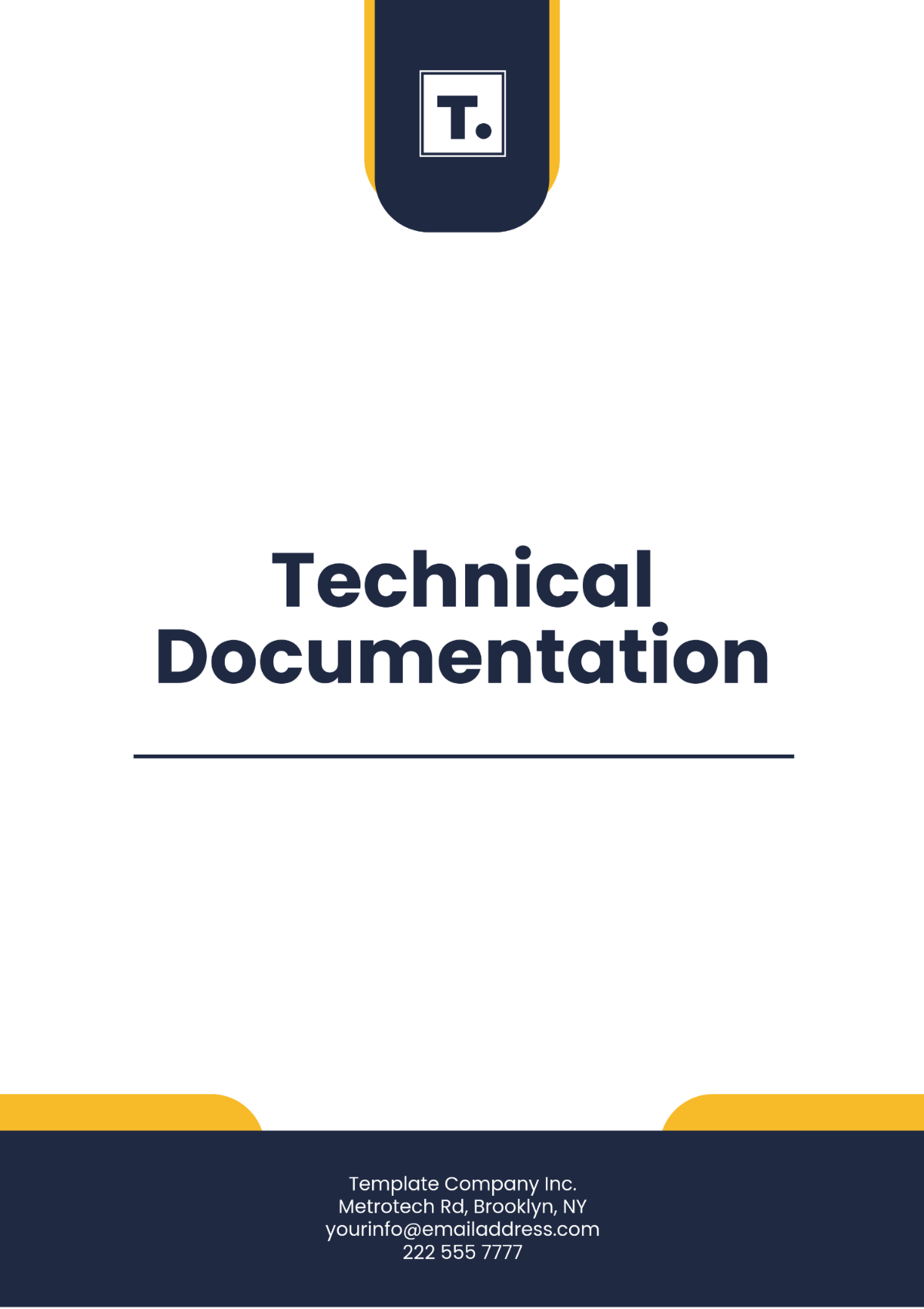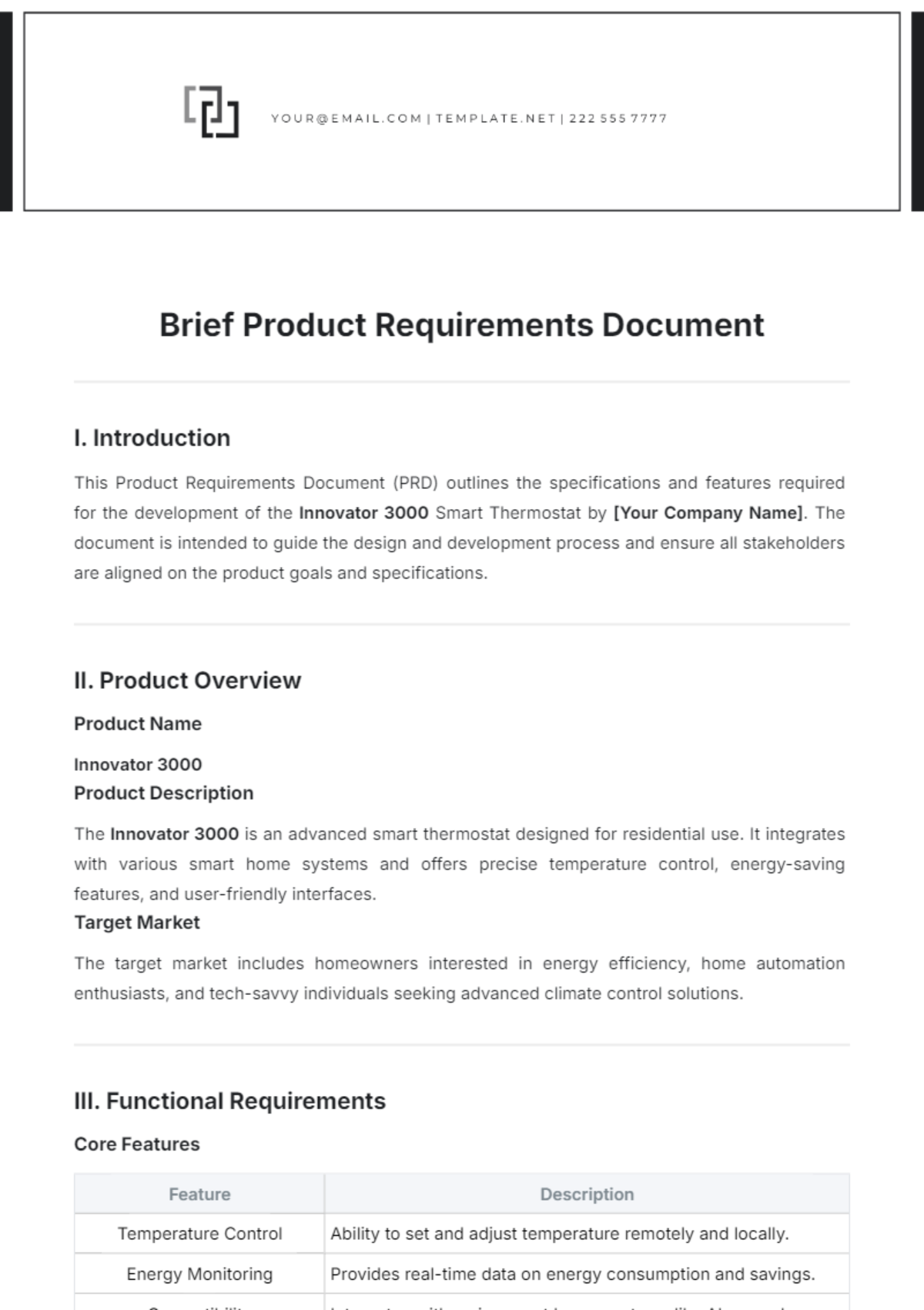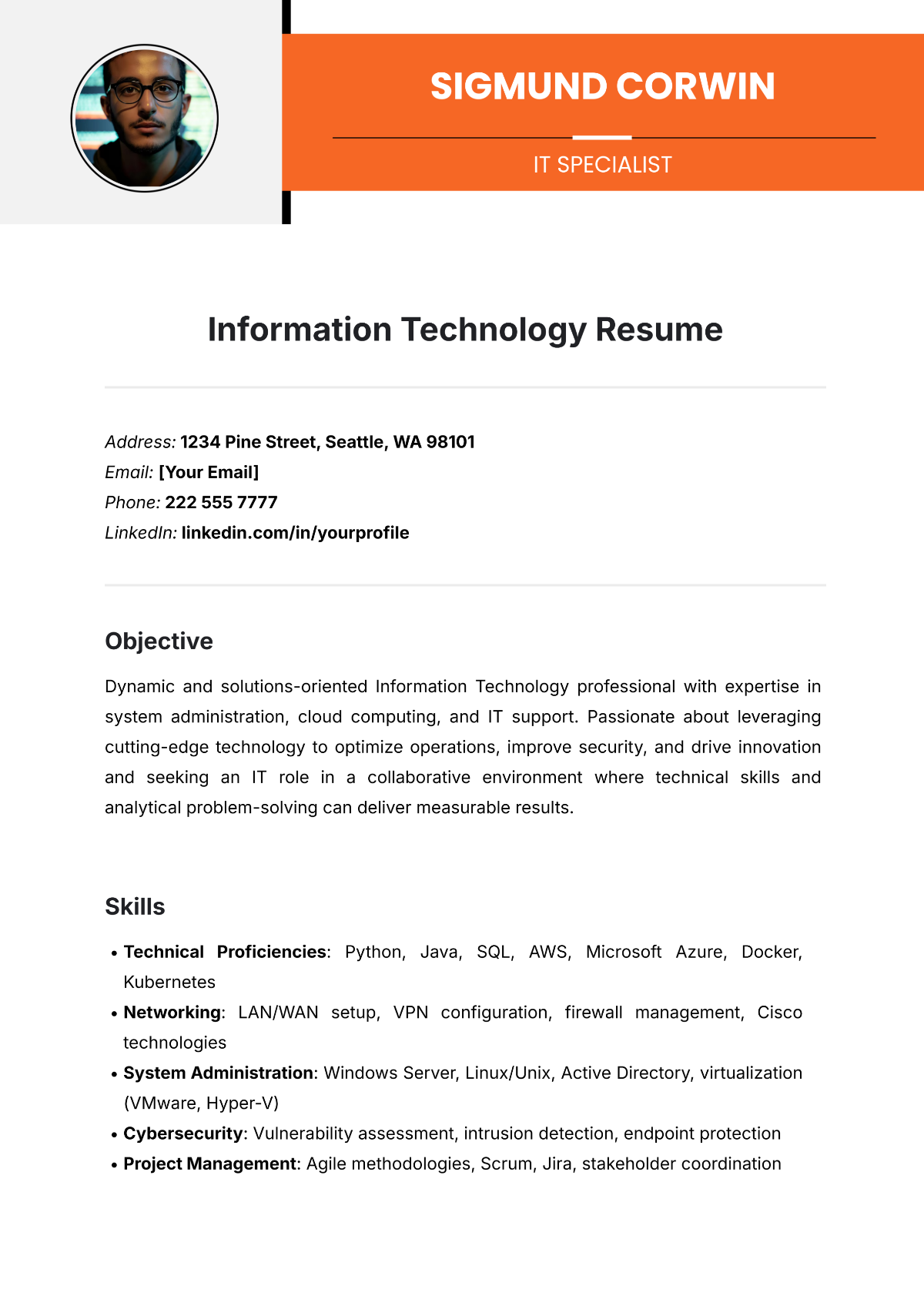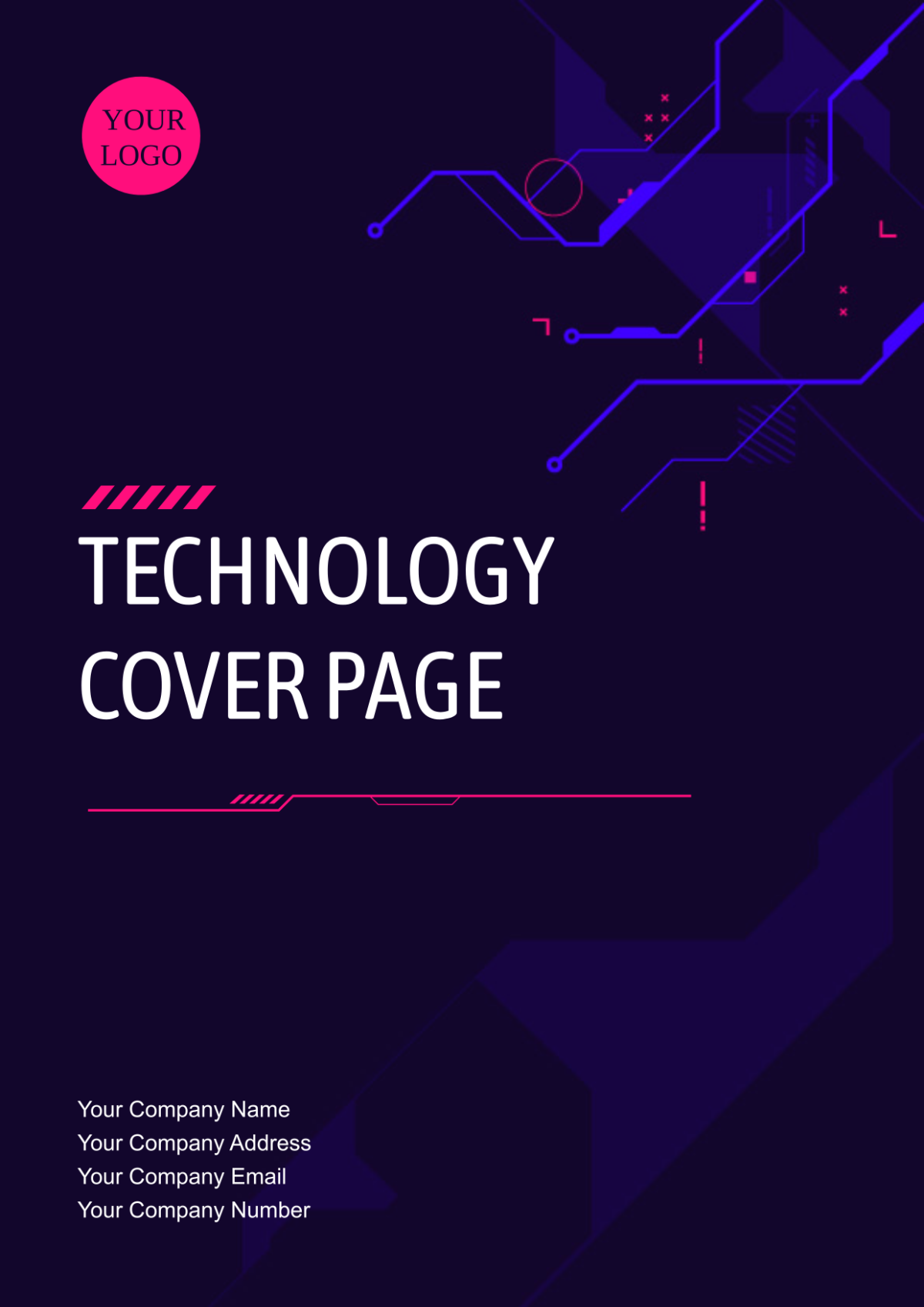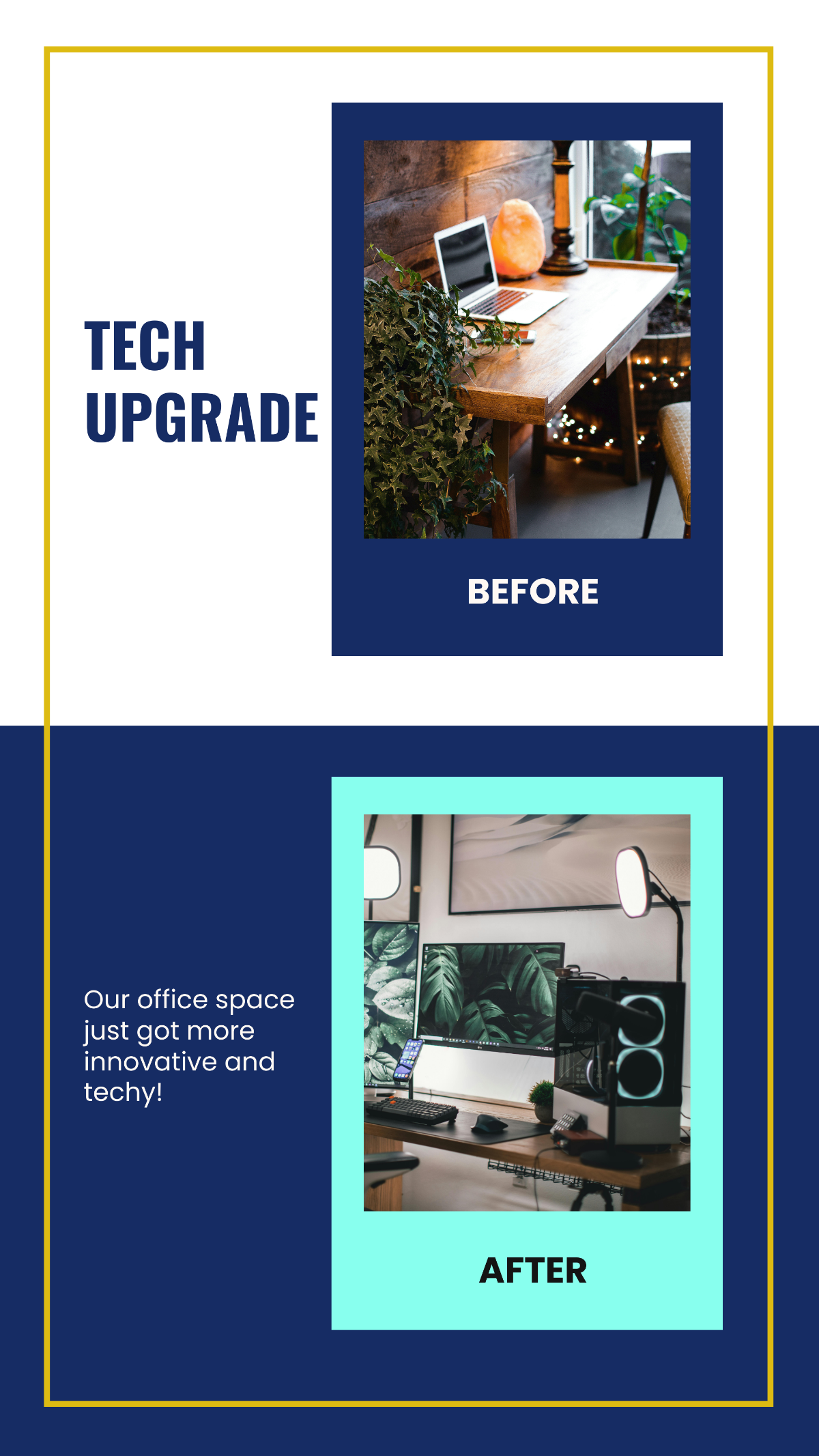Technical Requirements Document
I. Introduction
1. Purpose
This Technical Requirements Document (TRD) outlines the detailed technical specifications for the development of a new software platform, designed to enhance the operational capabilities of [Your Company Name]. The platform will support advanced data analytics and integrate seamlessly with existing systems.
2. Scope
The platform will address the need for improved data management, reporting capabilities, and user interface enhancements. The primary focus will be on ensuring scalability, security, and performance.
3. Definitions and Acronyms
API: Application Programming Interface
UI: User Interface
DBMS: Database Management System
II. System Overview
1. System Architecture
The platform will be built using a microservices architecture, which will ensure modularity and scalability. The system will be composed of the following components:
User Interface Module
API Gateway
Authentication Service
Data Processing Service
Database Management System (DBMS)
2. Functional Requirements
Functional Requirement | Description |
|---|---|
User Authentication | Secure login and user management |
Data Analytics | Real-time processing and visualization of data |
Reporting | Customizable reports and export options |
Integration | Ability to integrate with third-party services |
3. Non-Functional Requirements
Performance: The system must support 10,000 users with minimal latency.
Scalability: The platform should scale horizontally for increased load.
Security: Adherence to industry-standard security and data encryption.
III. Technical Specifications
1. Software Requirements
Operating System: Linux-based server environment
Programming Languages: Java, Python
Database: PostgreSQL
Web Framework: Spring Boot
2. Hardware Requirements
Component | Specification |
|---|---|
Server | Dual Xeon CPUs, 64 GB RAM, 1 TB SSD |
Network | 10 Gbps Ethernet |
Storage | 10 TB RAID 6 Storage |
3. API Specifications
Endpoint:
/api/v1/dataMethod: GET, POST
Authentication: OAuth 2.0
Data Format: JSON
IV. User Interface Design
1. User Interface Guidelines
Accessibility: The UI should be compliant with WCAG 2.1 standards.
Responsiveness: The interface must be optimized for all devices.
2. Mockups and Prototypes
Detailed mockups and interactive prototypes will be provided using tools such as Figma or Adobe XD. These will include:
Dashboard Layout
Report Generation Screen
User Profile Management
V. Testing and Validation
1. Testing Strategy
Unit Testing: Each component will be unit tested.
Integration Testing: Testing of combined components to ensure correct interaction.
Performance Testing: Load and stress testing for system performance validation.
2. Validation Criteria
Functionality: All functional requirements must be met.
Usability: The system must be user-friendly and intuitive.
Reliability: The system should exhibit high availability and minimal downtime.
VI. Deployment and Maintenance
1. Deployment Plan
Staging Environment: Deployment will first occur in staging for final validation.
Production Rollout: Gradual production rollout to a user subset.
2. Maintenance Plan
Regular Updates: Scheduled updates for system enhancements and bug fixes.
Support: A dedicated support team is available for help.
VII. Appendices
1. References
Technical Reference Documents: Technical Reference Documents
2. Industry Standards
ISO/IEC 27001: Information security management systems
ISO/IEC 20000: IT service management
3. Contact Information
Project Manager: [Your Name]
Email: [Your Email]
Company: [Your Company Name]
Address: [Your Company Address]
This document is designed to provide a comprehensive overview of the technical requirements for the project, ensuring that all stakeholders have a clear understanding of the system's needs and specifications.







